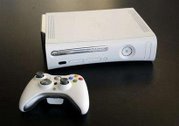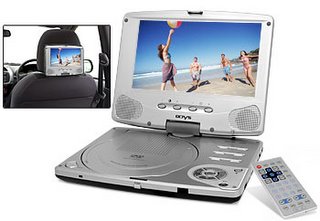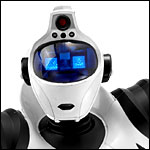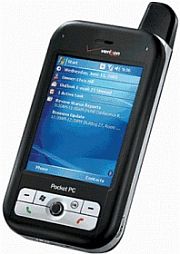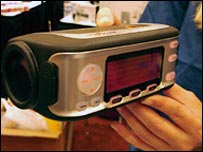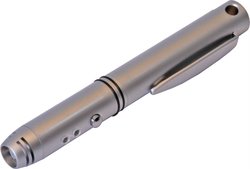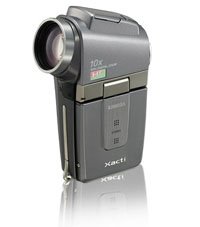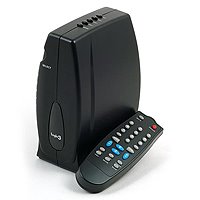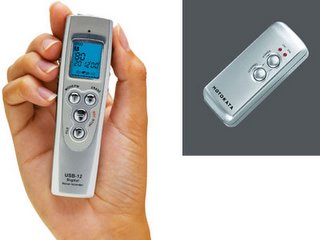Flat-screen marvels to show at CES Wide-angle digital cameraFrom big-screen flat-panel televisions that can simultaneously display four high-definition videos to a small dual-lens digital camera for wide-angle photography, this week's Consumer Electronics Show in Las Vegas will not be short on new gadgets.
However, the promise of the digital living room, with easy-to-use electronic gizmos for the mass audience, still remains elusive, analysts say.
That's despite the progress in products and services that will be unveiled this week by high-tech companies from all over the world, they say.
In fact, rather than painting grandiose visions of what the future may hold, high-tech companies at the four-day event will probably showcase individual products that are here now, said Ross Rubin, an analyst at the market research company the NPD Group.
"I think this year, it's a bit of a retreat in some way," he said. "Now, the attention is focusing back a little bit on individual (devices) and building up the flexibility of those products as well as the entertainment value or quality of those products."
Analyst Tim Bajarin says that shift in focus to individual devices is also part of a broader change in how tech companies view consumers.
Instead of creating new interconnected gadgets just for the digital home, tech companies now see the opportunities to sell technology that moves with customers anywhere they go, through cell phones, handheld computers, laptops, PCs and TVs.
"They not only want to own the living room, but to actually own the connected consumer,'' said Bajarin, president of Creative Strategies Inc. of Campbell.
This year's show, which opens Thursday and is expected to draw more than 130,000 people from about 110 countries, is now the single most important trade show for the $108 billion global consumer electronics industry. About 44,000 buyers are expected to walk the 1.6 million square feet of showroom floor, which will include 2,500 exhibitors.
Marketing event
But the show has become more than just a place to strike business deals. With about 4,000 journalists and 1,500 financial analysts also scrutinizing their wares, CES also has become an important marketing tool for many companies.
With digitalization of home entertainment content such as music, movies and TV shows, the reach of CES has definitely gone beyond traditional consumer electronics giants such as Sony, Samsung and Panasonic.
Now, the titans of the PC industry such as Microsoft, Intel Corp. and Hewlett-Packard are also trying to tap into the consumer electronics market.
This year's lineup of keynote speakers includes Microsoft's Bill Gates, Sony's new chief executive officer, Howard Stringer, and Intel CEO Paul Otellini.
The Internet is also likely to play a prominent role in this year's show, with Terry Semel and Larry Page, chief executives of Yahoo and Google, scheduled to take center stage on Friday as keynote speakers.
"In the 28 years that I've been attending CES, this is the first one that's had such diversity of consumer electronics, PC and content industries," said Richard Doherty, an analyst at the technology analyst company Envisioneering Group.
One of the key themes at this year's CES will be downloading videos from the Internet and being able to watch them on a number of different devices, including portable media players like Apple Computer's video iPod, Doherty said.
The idea is not new, but the concept has gained momentum in the past couple of months, with Hollywood making a number of deals to make popular TV shows available online.
The list includes Apple's deals with Disney and NBC Universal to make some of their shows available through the Cupertino company's iTunes Music Store. Time Warner has decided to make some older shows available through America Online, and CBS and Comcast have also struck a deal to make certain shows available as video on demand.
This week, Sling Media, a San Mateo startup whose Slingbox allows users to watch their television on a PC from anywhere in the world with an Internet connection, will take another step in that direction.
TV on cell phones, handhelds
The company will announce this week that it will start selling a software application that will allow Slingbox users to access their television using a cell phone or a handheld computer.
"It takes us closer to our overall goal, which is to turn every display that a consumer interfaces with into not only TV or some video source but turn it into the TV that you love the most, which is your living-room TV," said Blake Krikorian, CEO of Sling Media.
The new mobile software application will be available in the first quarter, but the price hasn't been set yet, he said.
The new software will be compatible with devices such as Dell's Axiom and HP's iPaq handhelds, which use the Windows Mobile operating system and have the ability to connect to the Internet using a Wi-Fi wireless network.
Retrofitting older device
Meanwhile, Bajarin predicts that "one of the hottest products'' that will be introduced at the show is a device that retrofits an older iPod Mini or regular iPod with black-and-white screens with a larger full-color screen capable of displaying videos and photos.
Citing confidentiality agreements, Bajarin said he could not disclose the name of the product or its maker.
Other electronic gizmos that will be shown off this week include Kodak's Easyshare V570 digital camera, which has two lenses that work together to mimic a wide-angle lens camera. The new compact 5-megapixel camera allows the photographer to capture a bigger chunk of the subject without having to stand farther back. It will be priced at $399 when it hits store shelves later this month, the company said.
Last year, Samsung's prototype 102-inch flat-panel plasma display grabbed much attention from the attendees. This year, Samsung is already touting that it will be exhibiting the world's largest flat-panel liquid crystal display, with an 82-inch screen.
One company will claim its flat-panel television will have one of the highest resolutions. Westinghouse is expected to unveil a 56-inch LCD that contains 8 million pixels. That's enough resolution to display four high-definition videos at the same time, said Rey Roque, vice president of marketing.
"This will have 23 times higher picture quality than images from standard DVDs," he said.
Also, at 56 inches, it will be among the largest LCD displays to be available this year, Roque said.
The price is not set yet, but it will be ready for sale in the second half of the year, he said.
In fact, Bajarin said, the show should herald the start of another trend that will carry through 2006. The prices of 42- and 46-inch LCD-TV monitors should drop to the $3,000 mark, which for the first time would make big-screen LCD monitors a cost-competitive alternative to plasma screen TVs.
While individual devices will probably be impressive, the bigger hurdle is making them easy to use and compatible with each other, said Doherty.
"Digital living room is here, but you have to have a master's degree in engineering to make it work, or be a professional home theater system installer," he said. "And this year, the industry will be looking to some of the top executives to say it's getting better."
Tags:
Flat-screen marvels CES Wide-angle digital camera



